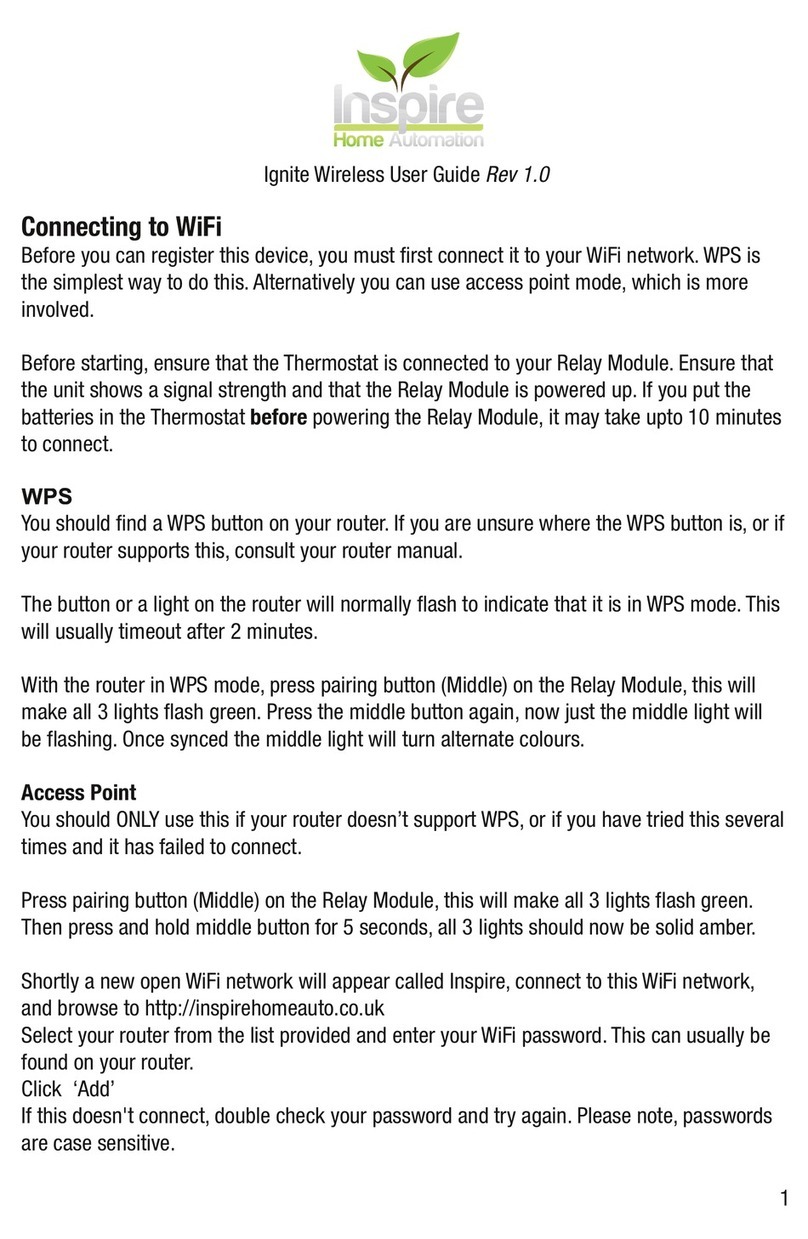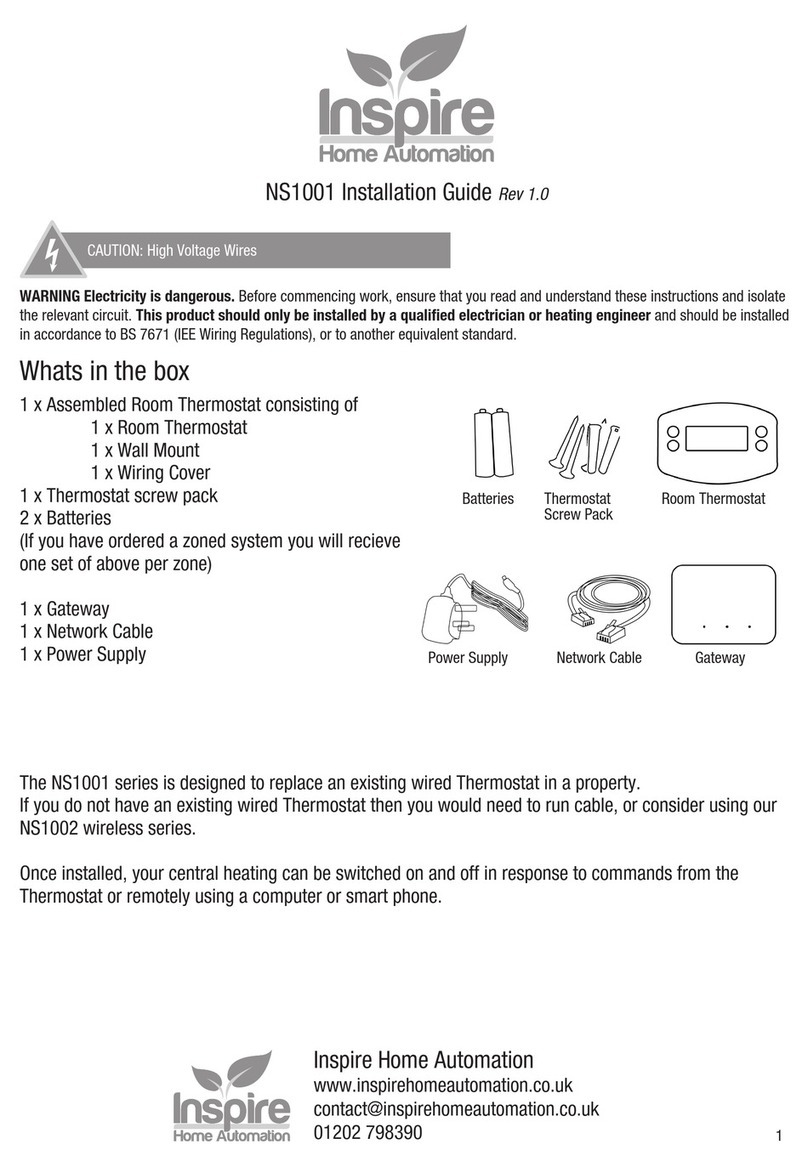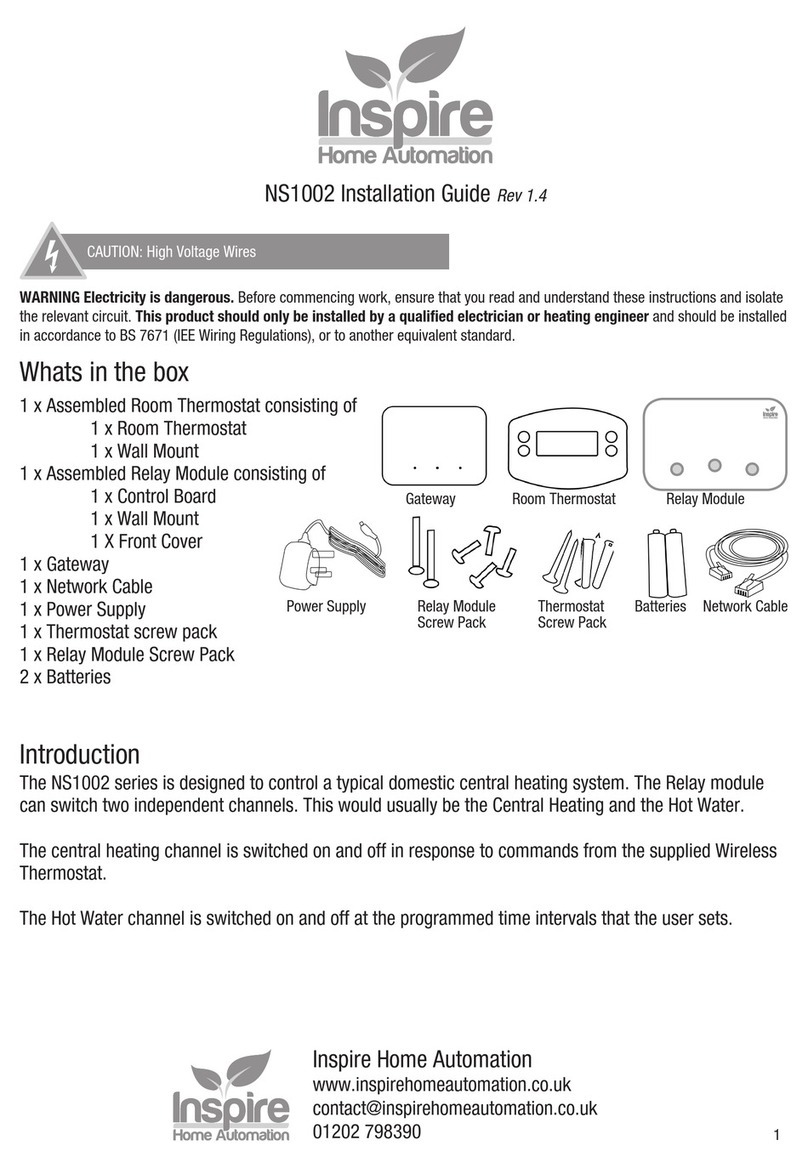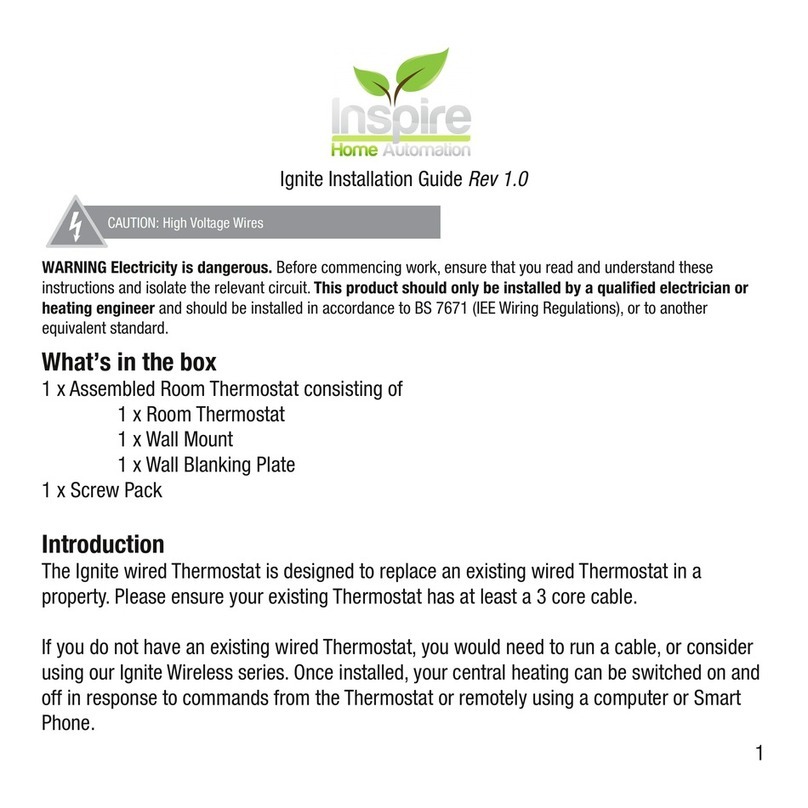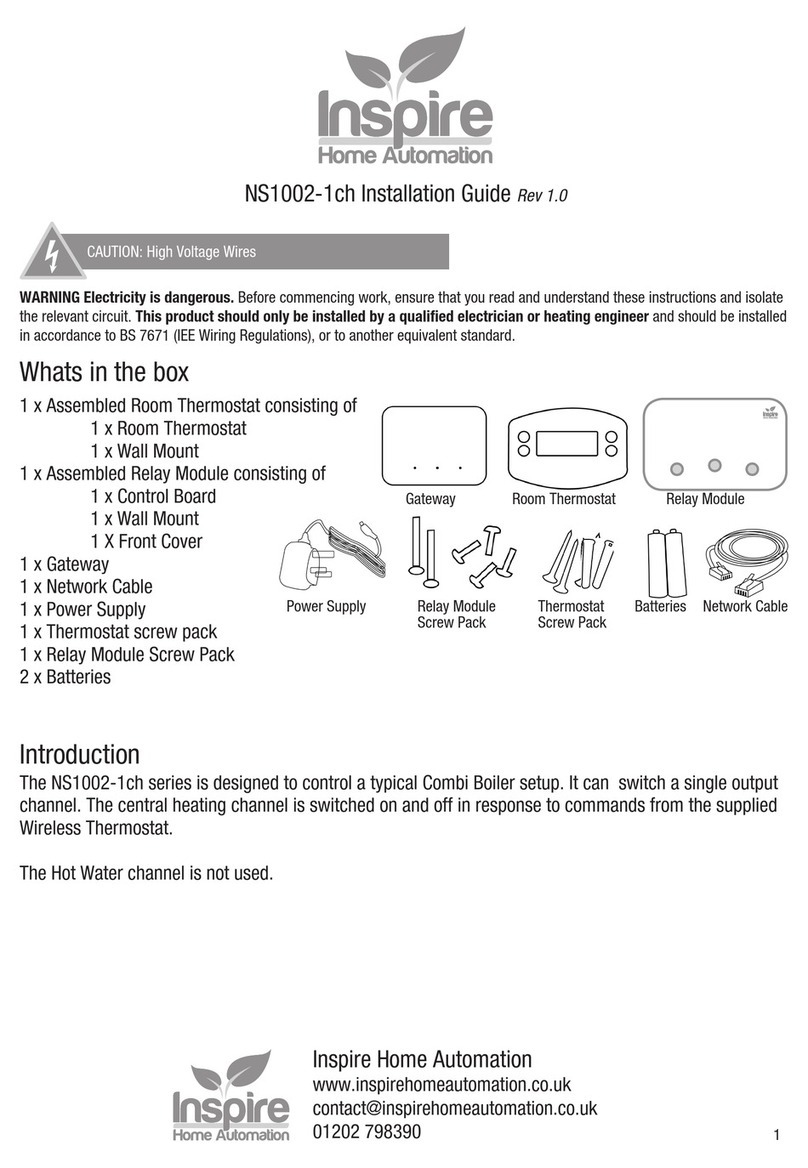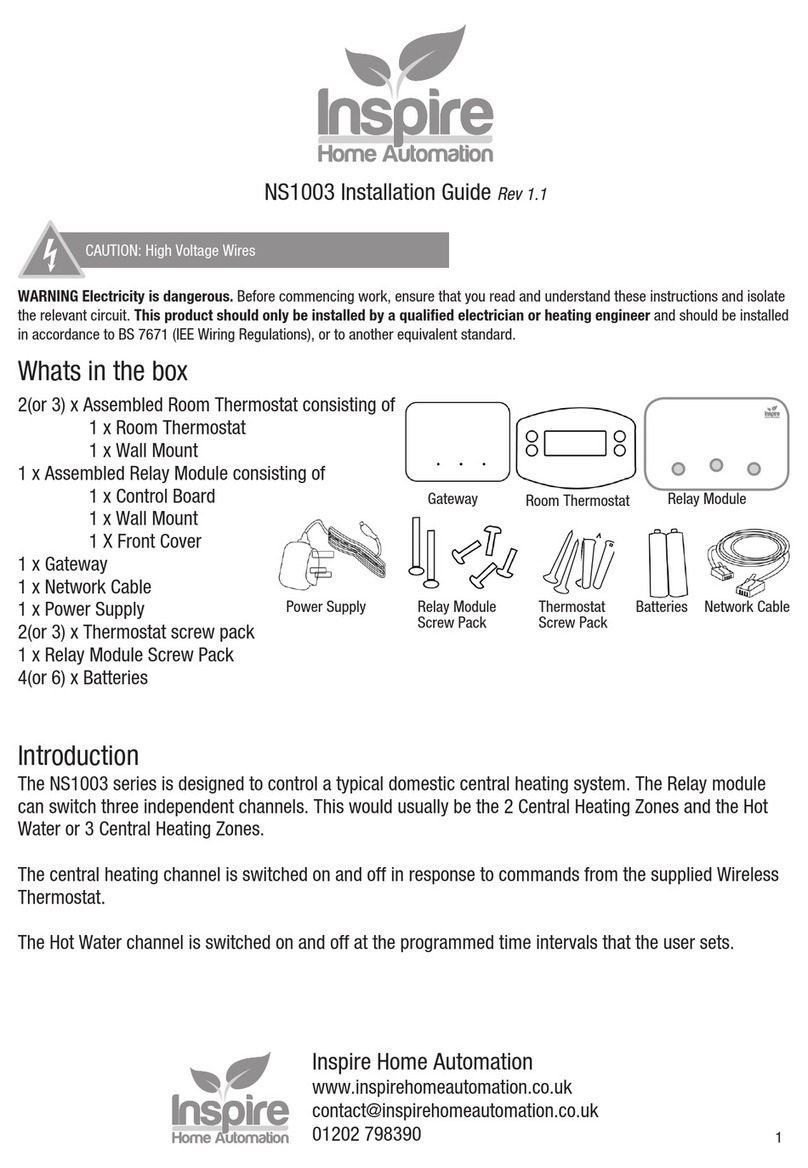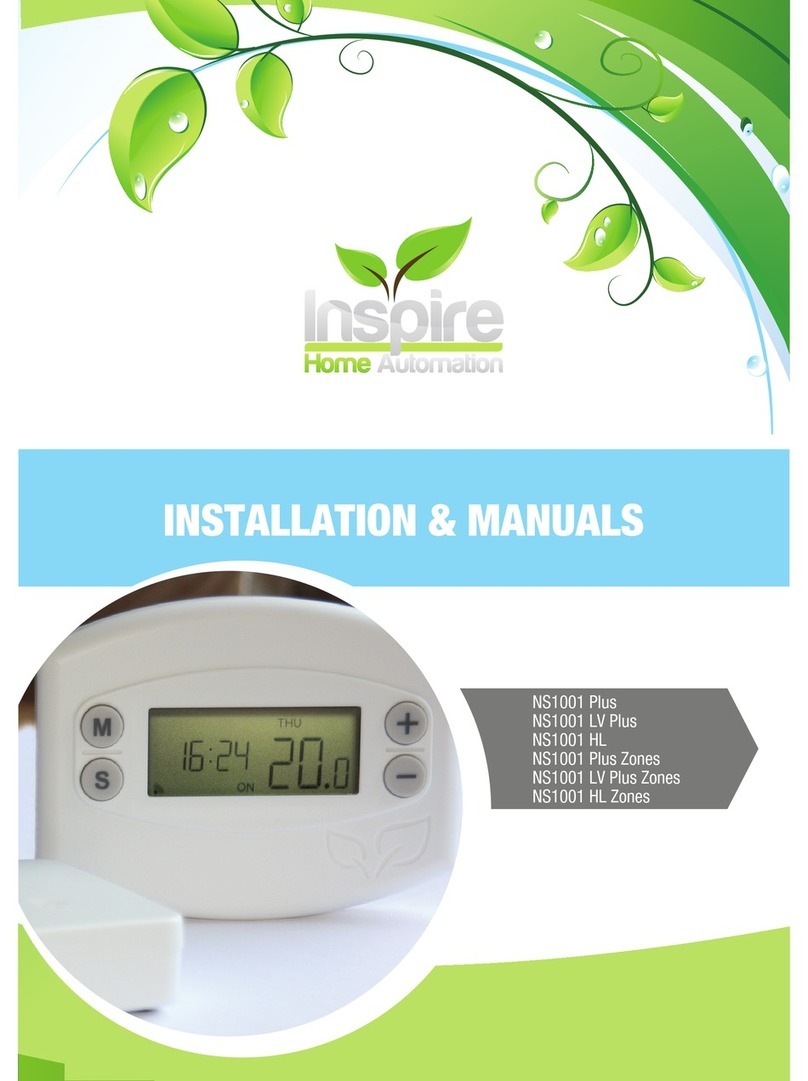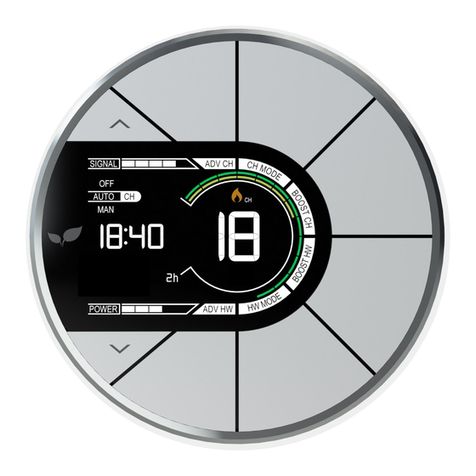Installation - Relay Module
Tools Required (Not supplied)
Philips screwdriver
Flat blade screwdriver
Long nosed pliers
BS4662 back box
Isolate the existing supply, then remove the existing Programmer (if fitted). Make a careful
note of all wiring locations of the existing programmer before removing any wires. The Relay
Module will replace most existing programmers on the market.
Remove the front cover from the Relay Module, this should easily lift off the unit. If the unit
has been ‘clicked’ in place, then grip the resessed part of the rear and pull the chrome part
of the front cover off.
Pull out the control panel from the wall mount by placing two fingers
on either side whilst holding the wall mount and pulling apart.
Then secure the wall mount onto the single or double gang back box using the two M3
screws provided. If you are not using an existing back box then you will either need to
sink a backbox into the wall, or use an external back box. You can find these in all good
hardware stores.
This unit is designed for fixed wiring only. Wire the unit up following the appropriate circuit
schematic for your heating system type, ensuring that all wires are securely held and that
no bare copper is visible outside the connector block. For ease of wiring, we recommend
1mm2 cable, although 1.5mm2 can also be used. All wiring should conform to the current
IEEE wiring regulations. When replacing an existing programmer, the wiring conversion
table, on the back cover, may be of assistance.
All diagrams are in schematic form and earths have been omitted on the drawings for
clarity. The Relay Module is a class 2 device and does not require an earth. Ensure that you
do not break earth continuity to the rest of the circuit. You may need to join the existing
earth leads together using a terminal strip. Ensure that the circuit is protected by a 3 amp
fuse.
If you are replacing an existing Wired Thermostat with our Wireless Thermostat.
The Wired Thermostat should be removed from the circuit and the Thermostat wiring made
safe by disconnecting the wiring and bridging the connections if required. Depending on
your existing system, the wired Thermostat may be wired back to either your programmer,
the wiring centre / junction box, a zone valve or the boiler itself.
4
><

